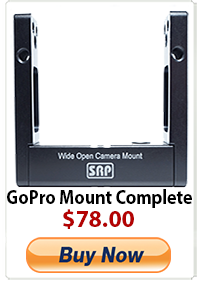Quick Take: Marshall Monitor Review
The video cannot be shown at the moment. Please try again later.
Written by Jason Wawro
Photos & Video by Hunter Kerhart
The single most important tool on set, other than the camera is the onboard monitor. If your onboard is game tight your gonna be alright, if not you’ll have a another reason to get the right one. So what is the right onboard? There are so many options at so many price points it’s really tough to decide. I have been working with onboards extensively since 1995 and the Marshall V-LCD70XP-3GSDI is far and away best onboard currently available. Yes, I know it’s over $1,000 and it is SDI and not HDMI but if you are working paid gigs that have VTR folks using HD client monitors you’ll be glad that you a have compatible bnc work flow.
What makes the 70XP leader of the pack? There are a couple of super sexy features that I really dig. First the image quality is outstanding, really nice viewable bright image with execelent color reproduction even in bright environments. Second is image flip, this may seem like an after thought to some but these onboards need mounted in all kinks of ways and being able to flip the image with the touch of a button enables you a far greater flexability in mounting options.
Third is the rock solid construction. This lil’ sucker is tough. Really rugged construction is essential in the fast paced production environment. Directors, producers, art department, glam squad, and a host of other are forever twisting and torquing these onboards to “get a look at the frame”. What inevitably happens is some one walks over to the camera grabs the monitor twists it off it’s mount the monitor then swings free bangs into something and breaks. The guilty party usually looks at you and says, “This thing is broken!?!?! What a piece of Shit!!! How am I supposed to do my job if I can’t see what’s going on? You need to get that thing fixed NOW!” then walks off in disgust. With that being said having a monitor that can handle this type of abuse while still outputting a superb image will make you look like a hero on set.
For my money and piece of mind the 70X is the way to go.
-
Chun
-
Bob














